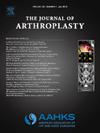社会经济指数与资源利用率增加有关,但与全髋关节和膝关节置换术后 90 天并发症无关。
IF 3.4
2区 医学
Q1 ORTHOPEDICS
引用次数: 0
摘要
简介:社会经济地位低下与全髋关节(THA)和膝关节(TKA)置换术后的不良预后有关。地区贫困指数(ADI)和贫困社区指数(DCI)是利用患者家庭住址对社会经济地位(SES)进行评分的综合排名。本研究的目的是在控制潜在混杂协变量的情况下,研究 ADI 和 DCI 与 THA 和 TKA 术后结果的关系:从本机构的全关节登记处查询了 2018 年 1 月至 2023 年 5 月间接受初次 THA 和 TKA 的 4146 名连续患者。收集了 90 天的内外科并发症和资源使用情况。获得了每位患者的 ADI 和 DCI 评分,并分析了这些评分与术后结果之间的关联:结果:ADI和DCI均与患者的年龄、性别、种族、合并症负担和吸烟状况有关。控制这些变量后,ADI 和 DCI 分数越高,住院时间越长(分别为 P = 0.003 和 P = 0.008),但与任何 90 天并发症、再次手术或翻修的发生率无关:通过 ADI 和 DCI 量化的 SES 与 THA 和 TKA 术后并发症的多个已知风险因素相关,但与术后 90 天的并发症、再次手术或翻修手术无关。虽然 ADI 和 DCI 是量化社会经济地位的方便指标,但在某些人群中,它们可能与 THA 和 TKA 术后的不利结果无关。本文章由计算机程序翻译,如有差异,请以英文原文为准。
Socioeconomic Indices Are Associated With Increased Resource Utilizations, but Not 90-Day Complications Following Total Hip and Knee Arthroplasty
Background
Socioeconomic disadvantage has been associated with negative outcomes following total hip arthroplasty (THA) and total knee arthroplasty (TKA). The area deprivation index (ADI) and distressed communities index (DCI) are composite rankings that score socioeconomic status (SES) using patients’ home addresses. The purpose of this study was to examine the association of ADI and DCI with outcomes following THA and TKA while controlling for potential confounding covariates.
Methods
A series of 4,146 consecutive patients undergoing primary THA and TKA between January 2018 and May 2023 were queried from our institutional total joint registry. The 90-day medical and surgical complications and resource utilization were collected. The ADI and DCI scores were obtained for each patient, and the association between these scores and postoperative outcomes was analyzed.
Results
The ADI and DCI were both associated with patient age, sex, race, comorbidity burden, and smoking status. After controlling for these variables, higher ADI and DCI scores were associated with increased length of stay (P = 0.003 and P = 0.008, respectively), but were not associated with the occurrence of any 90-day complication, reoperation, or revision.
Conclusions
The SES, as quantified by ADI and DCI, was associated with multiple known risk factors for complications following THA and TKA, but was not independently associated with complications, reoperations, or revision surgeries at 90 days postoperatively. While convenient metrics for the quantification of SES, in some populations, ADI and DCI may not be independently associated with detrimental outcomes following THA and TKA.
求助全文
通过发布文献求助,成功后即可免费获取论文全文。
去求助
来源期刊

Journal of Arthroplasty
医学-整形外科
CiteScore
7.00
自引率
20.00%
发文量
734
审稿时长
48 days
期刊介绍:
The Journal of Arthroplasty brings together the clinical and scientific foundations for joint replacement. This peer-reviewed journal publishes original research and manuscripts of the highest quality from all areas relating to joint replacement or the treatment of its complications, including those dealing with clinical series and experience, prosthetic design, biomechanics, biomaterials, metallurgy, biologic response to arthroplasty materials in vivo and in vitro.
 求助内容:
求助内容: 应助结果提醒方式:
应助结果提醒方式:


